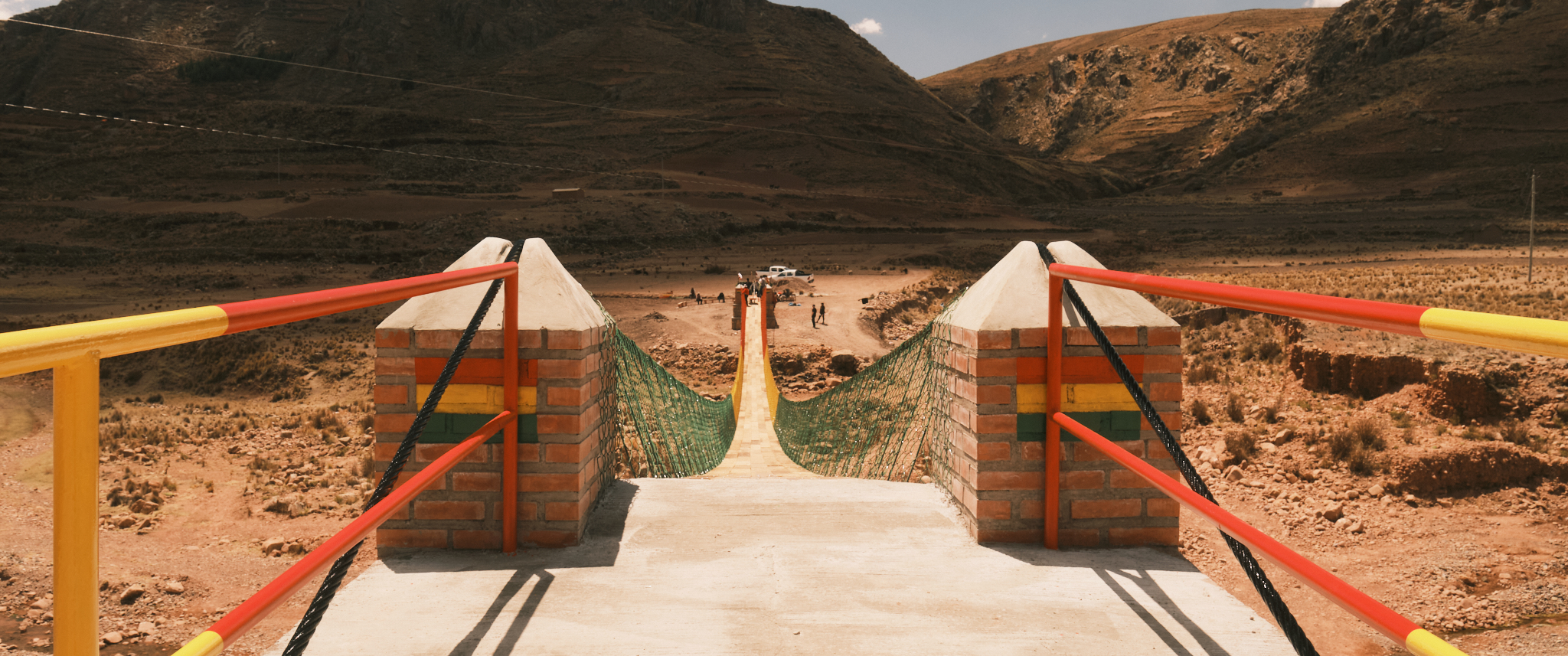McElhanney recently collaborated with Engineers in Action (EIA) to build an 81m pedestrian footbridge in Bolivia’s Río Churicala community. The volunteer-driven project team – made up of two McElhanney staff members, EIA staff in Bolivia, and other volunteer partners in the bridge building community – was stationed on site for two weeks to support the final stages of the bridge’s construction.
Footbridges like this provide residents with year-round access to economic opportunities, health care, and education. This newly erected bridge now acts as a means of safe passage to over 300 community members – 50 of whom are children who cross the path every day to get to and from school.
In speaking about her experience working on the project and the impact this bridge will have on the community, Allison MacKinnon, environmental technician at McElhanney says, “We watched these kids do that same route every day, knowing that for four months of the year, they would have had to make a human chain to get through the water to get to school. [Finishing the bridge] just felt like such an accomplishment!”
Bolivian masons and the local community in Río Churicala coordinated the overall construction efforts, while McElhanney’s volunteers led the quality control and site safety components.
“For me, being a bridge engineer, I’ve been able to work on many bridge designs, so it was an opportunity to apply what I do in the office in the field setting, but also have a more direct connection with the project itself and that local community,” says Vancouver-based bridge engineer Fraser Peterson.
About Engineers in Action
Engineers in Action’s (EIA’s) mission is to support the development of sustainable systems and infrastructure with underserved communities, local expertise, and global partners. Since its inception, EIA has built over 100 bridges for rural communities in 12 countries.
Photo Credit: Spencer Vandermeer
